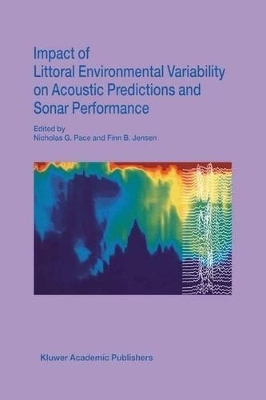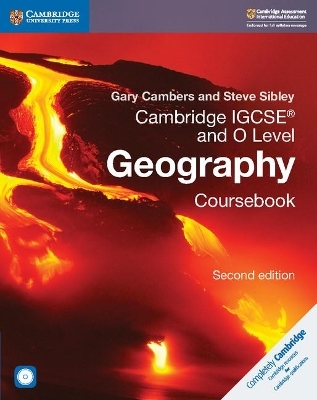
Impact of Littoral Environmental Variability on Acoustic Predictions and Sonar Performance
Kluwer Academic Publishers
978-1-4020-0816-0 (ISBN)
- Keine Verlagsinformationen verfügbar
- Artikel merken
The limiting influence of the environment on sonar has long been recognised as a major challenge to science and technology. As the area of interest shifts towards the littoral, environmental influences become dominant both in time and space. The manifold challenges encompass prediction, measurement, assessment, and adaptive responses to maximize the effectiveness of systems. Although MCM and ASW activities are dominated in different ways and scales by the environment, both warfare areas have had to consider the significantly changing requirements posed by operations in the littoral. The fundamental scientific issues involved in developing models relating acoustics to the environment are matched in difficulty by the need for data for their validation and eventual practical use for prediction. In many instances the need is for the longer term planning activities. This book and the enclosed CD-ROM are the proceedings of a conference organised by the SACLANT Undersea Research Centre, and held at the Villa Marigola, Lerici, Italy, on 16-20 September 2002.
CD-ROM Included: this volume contains a CD-ROM which in addition to an electronically searchable version of the proceedings, has full colour versions of figures which are printed in black and white in the book.
Preface. Section 1: Ocean variability. Acoustic effects of environmental variability in the SWARM, PRIMER and ASIAEX experiments (Invited paper); J. Lynch, et al. Acoustic intensity variability in a shallow water environment; B.H. Pasewark, et al. Combination of acoustics with high resolution oceanography (Invited paper); J. Sellschopp, et al. Effect of hurricane Michael on the underwater acoustic environment of the Scotian Shelf; D. Hutt, et al. High-frequency acoustic propagation in the presence of oceanographic variability; M. Badiey, et al. Instrumented tow cable measurements of temperature variability of the water column; A.A. Ruffa, M.T. Sundvik. Mesoscale - small scale oceanic variability effects on underwater acoustic signal propagation; E. Coelho. Spatial coherence of signals forward scattered from the sea surface in the East China Sea (Invited paper); P.H. Dahl. Variability in high frequency acoustic backscattering in the water column; A.C. Lavery, et al. Section 2: Seabed variability. Intra- and inter-regional geoacoustic variability in the littoral (Invited paper); C.W. Holland. Acoustic and in-situ techniques for measuring the spatial variability of seabed geoacoustic parameters in littoral environments; J.C. Osler, et al. Measurements of bottom variability during SWAT New Jersey Shelf experiment; A. Turgut, et al. Mapping seabed variability using combined echosounder and XBPs for sonar performance prediction; K.M. Kelly, G.J. Heald. Variability of shear wave speed and attenuation in surficial marine sediments; M.D. Richardson. In-situ determination of the variability of seafloor acoustic properties: An example from the ONR Geoclutter area; L.A. Mayer, et al. Calculation of in situ acoustic wave properties in marine sediments; B.J. Kraft, et al. Sub-bottom variability characterization using surface acoustic waves; M.E. Zakharia. The influence of noise and coherence fluctuations on a new geo-acoustic inversion technique; C.H. Harrison. Estimating shallow water bottom geo-acoustic parameters using ambient noise; D. Tang. Effect of environmental variability on model-based signal processing: Review of experimental results in the Mediterranean; J.-P. Hermand. Rapid geoacoustic characterization for limiting environmental uncertainty for sonar system performance prediction; K.D. Heaney, H. Cox. Environmental uncertainty in acoustic inversion; S.E. Dosso, M.J. Wilmut. Measuring the azimuthal variability of acoustic backscatter from littoral seabeds; P.C. Hines, et al. Backscatter from elastic ocean bottoms: Using the small slope model to assess acoustical variability and uncertainty; R.F. Gragg, et al. Spatial and temporal variability in bottom roughness: Implications to high frequency subcritical penetration and backscatter; K.L. Williams, et al. Variability of bottom backscattering strength in the 10-500 kHz band at shallow grazing angles; N.P. Chotiros. Predicting scattered envelope statistics of patchy seafloors; A.P. Lyons, et al. The effect of seabed backscattering variability on the probability of detection and on the performance of seabed classification algorithms; E. Pouliquen, et al. Section 3: Acoustic fluctuations: Measurements. Effects of environmental variability on acoustic propagation loss in shallow water; T. Akal. Broadband acoustic signal variability in two "typical" shallow-water regions; P.L. Nielsen, et al. Variability, coherence and predictability of shallow water acoustic propagation in the Straits of Florida; H.A. DeFerrari, et al. Ambient noise and signal uncertainties during the summer shelfbreak PRIMER exercise; P. Abbot, et al. Variability effect due to shallow sediment gas in acoustic propagation: A case study from the Malta Plateau; K.M. Kelly. Acoustic fluctuations and their harmonic structure; R. Field, et al. Group and phase speed analysis for predicting and mitigating the effects of fluctuations; W.A. Kuperman, et al. High-frequency propagation for acoustic communications; M.B. Porter, et al. Channel impulse response fluctuations at 6 kHz in shallow water; W.S. Hodgkiss, et al. High resolution analysis of eigenray gain perturbations in ultra-shallow water; S.M. Simmons, et al. Impact of flow variability on fixed side-looking 100 kHz sonar performance in a shallow channel; M. Trevorrow. Correlation between sonar echoes and sea bottom topography; J. Wegge. Section 4: Acoustic fluctuations: Models. Acoustic scattering in wave-covered shallow water. The coherent field; B.J. Uscinski. Simulations of temporal and spatial variability in shallow water propagation; E.I. Thorsos, et al. Assessing the variability of near-boundary surface and volume reverberation using physics-based scattering models; R.C. Gauss, et al. Modeling propagation and reverberation sensitivity to oceanographic and seabed variability; K.D. LePage. Uncertainty in reverberation modelling and a related experiment; C.H. Harrison, et al. Statistics of the waveguide invariant distribution in a random ocean; D. Rouseff. Effects of environmental variability on focused acoustic fields; B.E. McDonald, et al. Effects of sound speed fluctuations due to internal waves in shallow water on horizontal wavenumber estimation; K.M. Becker, G.V. Frisk. Relative influences of various environment factors on 50-100 Hz sound propagation in shelf and slope areas; T.F. Duda. Sub-mesoscale modelling of environmental variability in a shelf-slope region and the effect on acoustic fluctuations; S. Finette, et al. Yellow Sea internal solitary wave variability; A. Warn-Varnas, et al. Four-dimensional data assimilation for coupled physical-acoustical fields; P.F.J. Lermusiaux, C.-S. Chiu. Source localization in a highly variable shallow water environment: Results from ASCOT-01; M. Siderius, et al. Experimental testing of the blind ocean acoustic tomography concept; S.M. Jesus, et al. Benchmarking geoacoustic inversion methods for range dependent waveguides; N.R. Chapman, et al. Adjoint-assisted inversion for shallow water environment parameters; P. Hursky, et al. Tidal Effects on MFP via the INTIMATE96 test; A. Tolstoy, et al. Multipath effect on DPCA micronavigation of a synthetic aperture sonar; L. Wang, et al. Sea surface simulator for testing a synthetic aperture sonar; B. Davis, et al. Using a faceted rough surface environmental model to simulate shallow-water SAS imagery; A.J. Hunter, et al. A study of ping-to-ping coherence of the seabed response; L. Pautet, et al.Variability of the acoustic response from spherical shells buried in the seabed by model-based analysis of the at-sea data; A. Tesei, et al. Section 5: Sonar signal processing and performance predictions. Performance bounds on the detection and localization in a stochastic ocean; A.B. Baggeroer, H. Schmidt. Robust adaptive processing in littoral regions with environmental uncertainty; L.M. Zurk, et al. A robust model-based algorithm for localizing marine mammal transients; C.O. Tiemann, et al. Assessment of the impact of uncertainty in seabed geoacoustic parameters on predicted sonar performance; M.K. Prior, et al. Reverberation envelope statistics and their dependence on sonar beamwidth and bandwidth; D.A. Abraham, A.P. Lyons. The role of nowcast and forecast input parameters for range dependent transmission models; J.S. Sendt, et al. Are current environmental databases adequate for sonar predictions in shallow water? C.M. Ferla, F.B. Jensen. Yellow Sea acoustic uncertainty caused by hydrographic data error; P.C. Chu, et al. Detection of sonar induced measurement uncertainties in environmental sensing: A case study with the toroidal volume search sonar; C. de Moustier, T.C. Gallaudet. Environmental variability of the LBVDS sea tests; S. Sutherland-Pietrzak, E. McCarthy. AREA: Adaptive Rapid Environmental Assessment; H. Schmidt. Environmental adaptive sonar control in a tactical setting; W.L.J. Fox, et al. Transfer of uncertainties through physical-acoustical-sonar and end-to-end systems: A conceptual basis; A.R. Robinson, et al. Sonar performance predictions incorporating environmental variability; P. Abbot, I. Dyer. Author Index.
| Erscheint lt. Verlag | 31.8.2002 |
|---|---|
| Zusatzinfo | 1 |
| Sprache | englisch |
| Maße | 160 x 240 mm |
| Gewicht | 1070 g |
| Themenwelt | Naturwissenschaften ► Geowissenschaften ► Geografie / Kartografie |
| Naturwissenschaften ► Geowissenschaften ► Hydrologie / Ozeanografie | |
| ISBN-10 | 1-4020-0816-3 / 1402008163 |
| ISBN-13 | 978-1-4020-0816-0 / 9781402008160 |
| Zustand | Neuware |
| Haben Sie eine Frage zum Produkt? |
aus dem Bereich


